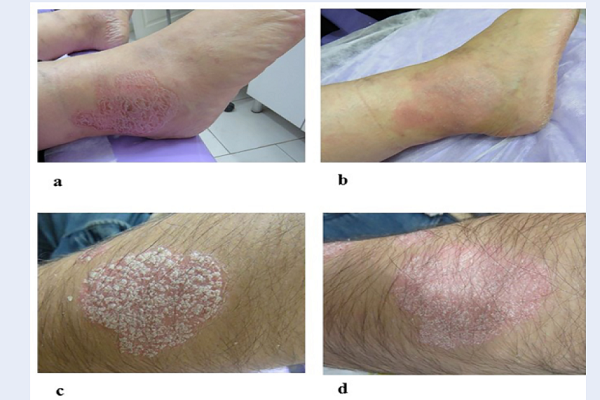Evaluation of the efficacy of a topical chamomile-pumpkin oleogel for the treatment of plaque psoriasis: an intra-patient, double-blind, randomized clinical trial
DOI:
https://doi.org/10.15419/bmrat.v5i11.499Keywords:
Chamomile, Plaque psoriasis, PumpkinAbstract
Background: Plaque psoriasis is a chronic inflammatory skin disease. Conventional treatments of psoriasis are not completely effective. In addition, unwanted side effects limit their long-term use. In this regard, developing new natural treatments with fewer side effects could be an alternative option. This study was designed to evaluate the efficacy and safety of topical chamomile-pumpkin oleogel (ChP) in treating plaque psoriasis.
Methods: A total of 40 patients with mild-to-moderate plaque psoriasis were enrolled in this intra-patient, double-blind, block-randomized clinical trial. In each patient, bilateral symmetrical plaques were treated with ChP or placebo twice daily for four weeks. For clinical assessment, the Psoriasis Severity Index (PSI) and the Physician's Global Assessment (PGA) scale were evaluated at baseline and after the treatment. At the end of the study, patients' satisfaction with the treatment was evaluated using a visual analog scale (VAS) ranging from 0 to 10. For safety assessment, all treatment-related side effects were recorded.
Results: Thirty-seven subjects (20 female, 17 male; age 20–60 years) completed the study. The mean decreases in the PSI score in the ChP group (4.09 +/- 2.24) were significantly (p = 0.000) greater than the placebo group (0.48 +/- 1.39). According to the PGA results, 13/37 (35%) of the ChP-treated plaques could achieve marked to complete improvement compared to 0% in the placebo group. Three patients dropped out from the study due to worsening of bilateral plaques during the first week of trial.
Conclusion: Our results suggest that topically applied ChP could provide a safe and effective complementary option for psoriasis plaque management. IRCT registration code: IRCT2016092830030N1.

Downloads
Published
Issue
Section
License
Copyright The Author(s) 2017. This article is published with open access by BioMedPress. This article is distributed under the terms of the Creative Commons Attribution License (CC-BY 4.0) which permits any use, distribution, and reproduction in any medium, provided the original author(s) and the source are credited.
